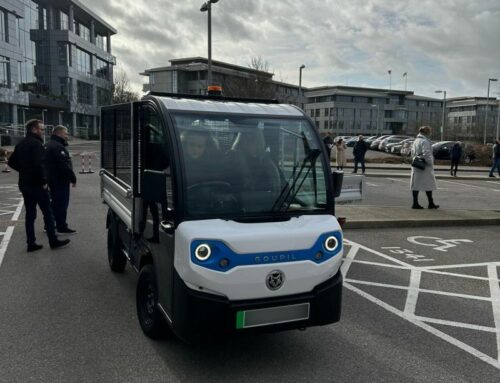New Mercedes 2.0 diesel engine for vans and cars
- 2.0-litre instead of 2.15 litres
- Power raised from 170 to 195hp
- Emissions and CO2 cut by 13%
- All exhaust treatments now part of engine assembly not on vehicle
- First all-aluminium four-cylinder diesel engine 17% (34kg) lighter and more compact
- 4th-generation common rail injection
- Lower noise level and outstanding vibration comfort
MERCEDES’ cleaner new diesel engine will be good for business with lower “real world” emissions and fuel consumption alongside more power from just 2.0 litre.
Launching in the new Mercedes E-Class E220 d this spring, it is the first of a new all-aluminium generation that will roll out across van models as well as cars.
It still uses AdBlue but all the elements of the exhaust after-treatment system are now directly on the engine itself and not on the vehicle.
Called the OM 654 and with exemplary efficiency and emissions, the aims of Mercedes’ cleaner new diesel engine, slightly smaller at 2.0 litre rather than 2.15 but 25hp more powerful at 195hp, is to future-proof the premium diesel amid the new wave of emissions curbs and accelerating hybrid and electric vehicle market growth.
In our opinion, the diesel engine is indispensable in trucks and cars if we want to further reduce the CO2 emissions from traffic
Prof Dr Thomas Weber, member of the Daimler Board of Management with responsibility for Group Research and Head of Mercedes-Benz Cars Development, said: “The new premium diesels are more efficient and powerful, lighter and more compact – and they are designed to meet all future global emissions standards.
“In our opinion, the diesel engine is indispensable in trucks and cars if we want to further reduce the CO2 emissions from traffic.”
In its road map towards sustainable mobility, Mercedes-Benz attaches key importance to the optimisation of modern internal combustion engines alongside hybrid and electric vehicles. In particular, the economical, clean and, especially in Europe, highly popular diesel engine makes an important contribution to the further reduction of fleet consumption.
In the two decades since 1995, the average consumption of the passenger car fleet has fallen by almost half from 230 g/km C)2 to 125 g/km. Today, Mercedes-Benz Cars has 68 models that emit less than 120 g/km – and 108 models with the efficiency label A+ or A.
The modular family of engines will find broad application across the entire range of Mercedes-Benz cars and vans. There are plans for several output variants as well as longitudinal and transverse installation in vehicles with front-, rear- and all-wheel drive. This, too, makes the new engine so significant, because the improvements in efficiency have a direct impact on Mercedes-Benz’s fleet consumption.
Another of the objectives behind the new generation of engines was to reduce the number of variants as far as possible. The engine’s compact dimensions allow even more flexibility in adapting to different vehicle models. The interfaces between drive unit and vehicle have been standardised across all model series.
The new diesel engine is designed to meet future emissions legislation (RDE – Real Driving Emissions). In contrast to the current NEDC measurement cycle, the WLTP (Worldwide harmonised Light vehicles Test Procedure) cycle is aimed at ensuring that the figures for standard and real-world consumption are close together in future.
Another of the objectives behind the new generation of engines was to reduce the number of variants as far as possible. The engine’s compact dimensions allow even more flexibility in adapting to different vehicle models
In addition, it is planned in Europe to introduce a measuring procedure for Real Driving Emissions (RDE).
The new engine is equipped with multiway exhaust gas recirculation (EGR). This combines cooled high-pressure and low-pressure EGR. It makes it possible to significantly further reduce the untreated emissions from the engine across the entire engine map, with the centre of combustion being optimised for fuel economy.
The exhaust gas from the turbocharger is sent first to a diesel oxidation catalyst. It next passes the downdraft mixer, in which AdBlue is added by means of a water-cooled dosing module. Thanks to a specially developed mixing area, the AdBlue evaporates over the shortest possible distance in the exhaust gas stream and is distributed very uniformly on the surface of the downstream sDPF (particulate filter with coating to reduce nitrogen oxides).
Positioned behind the sDPF is an SCR catalyst for further catalytic reduction of the nitrogen oxides. Only then does the treated exhaust gas enter the exhaust system.








Leave A Comment